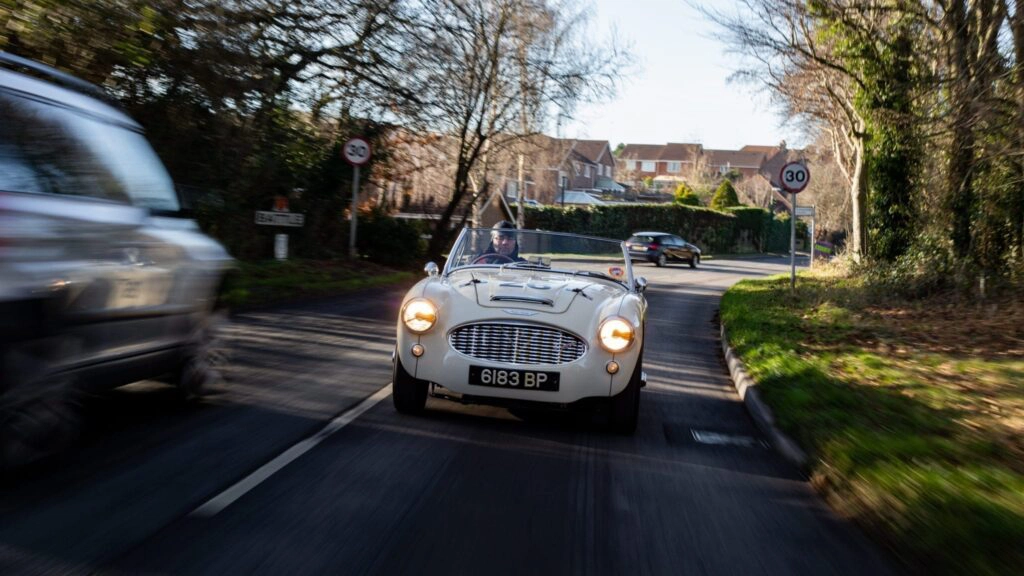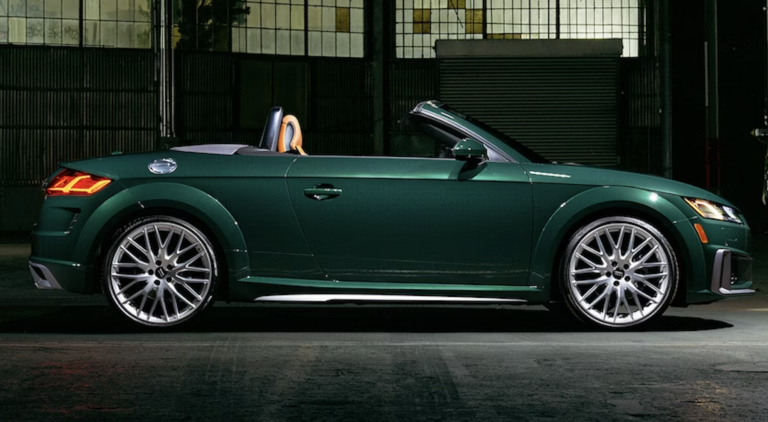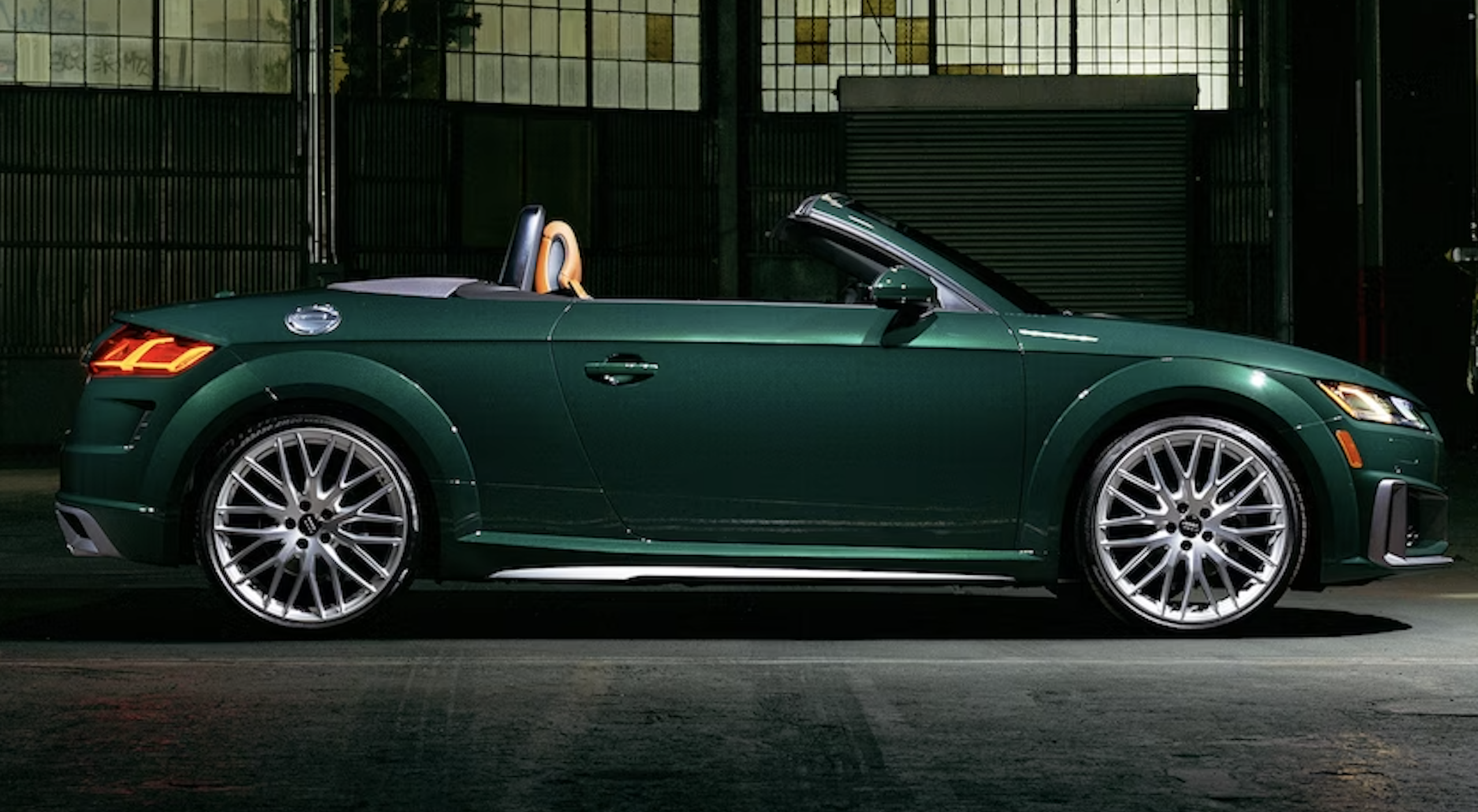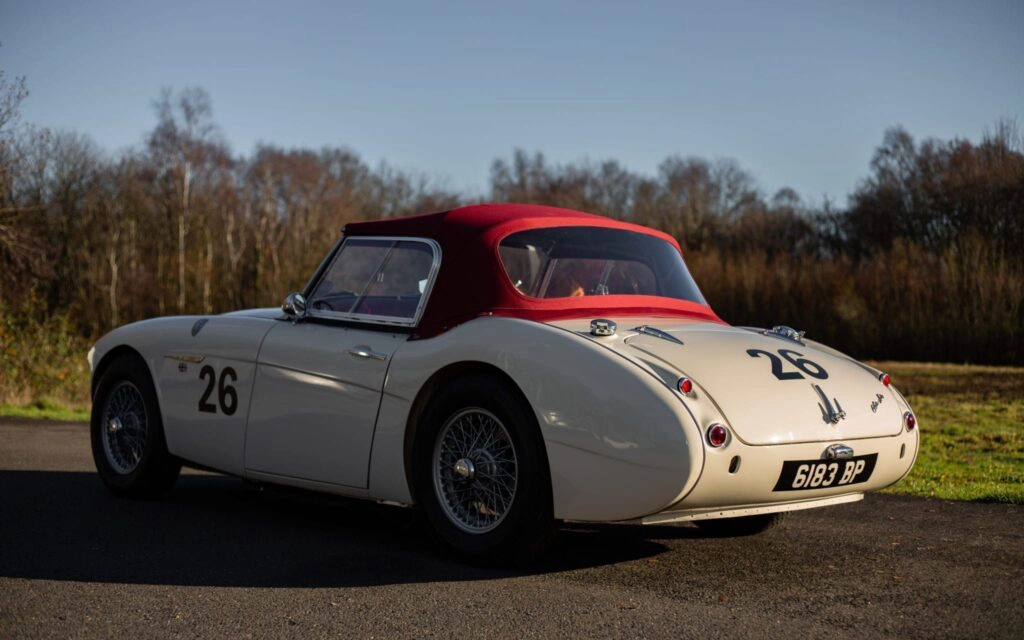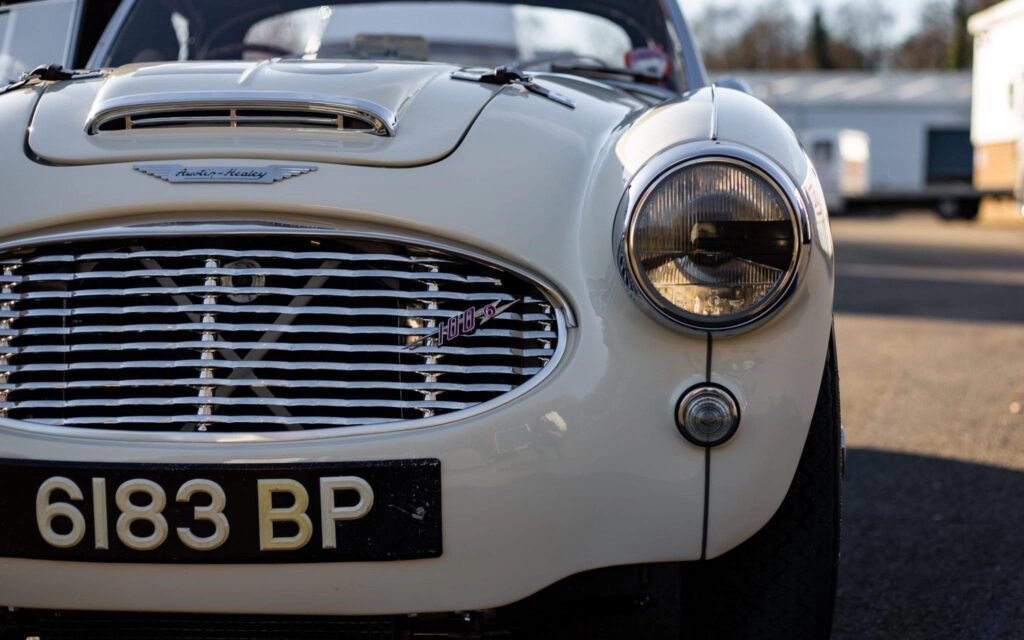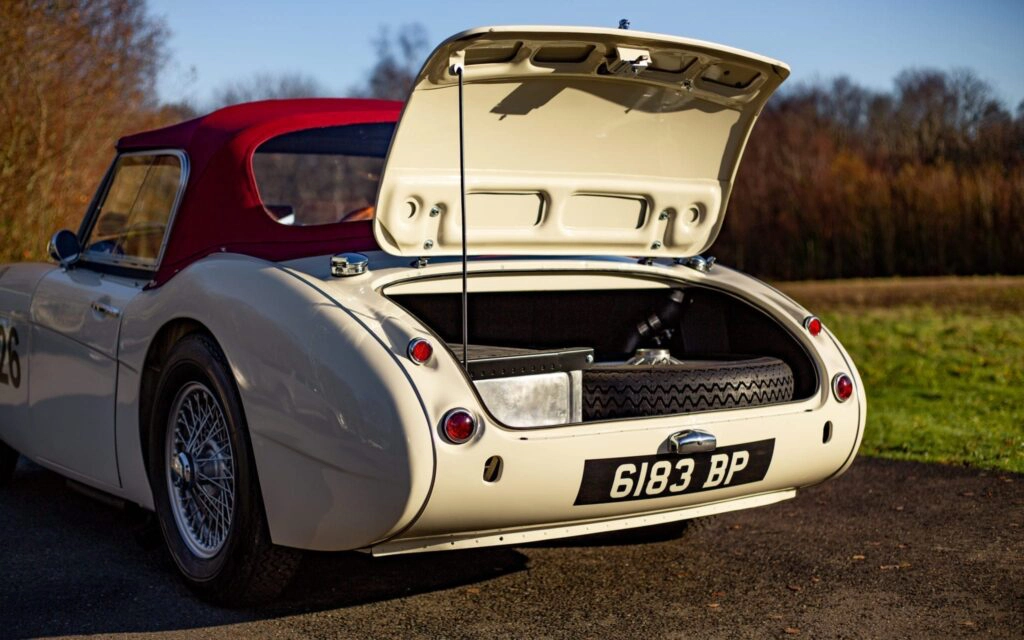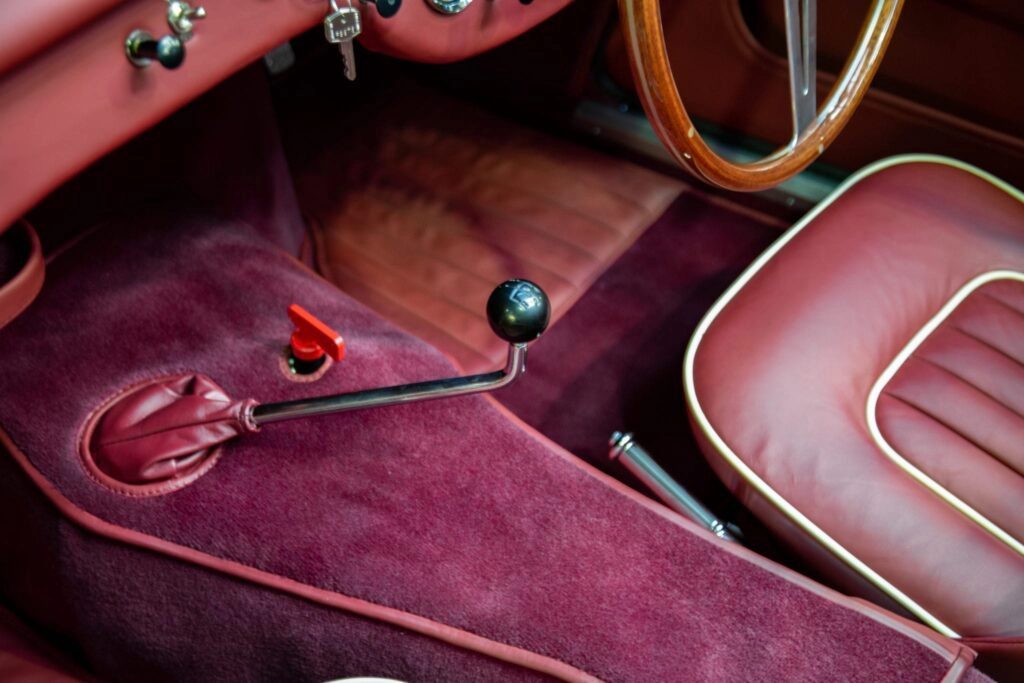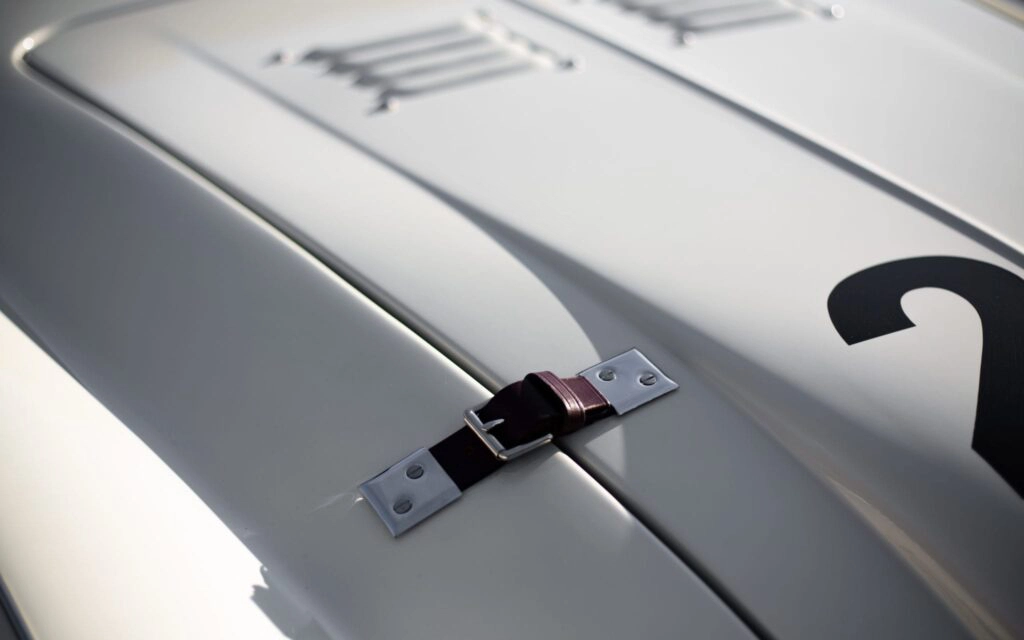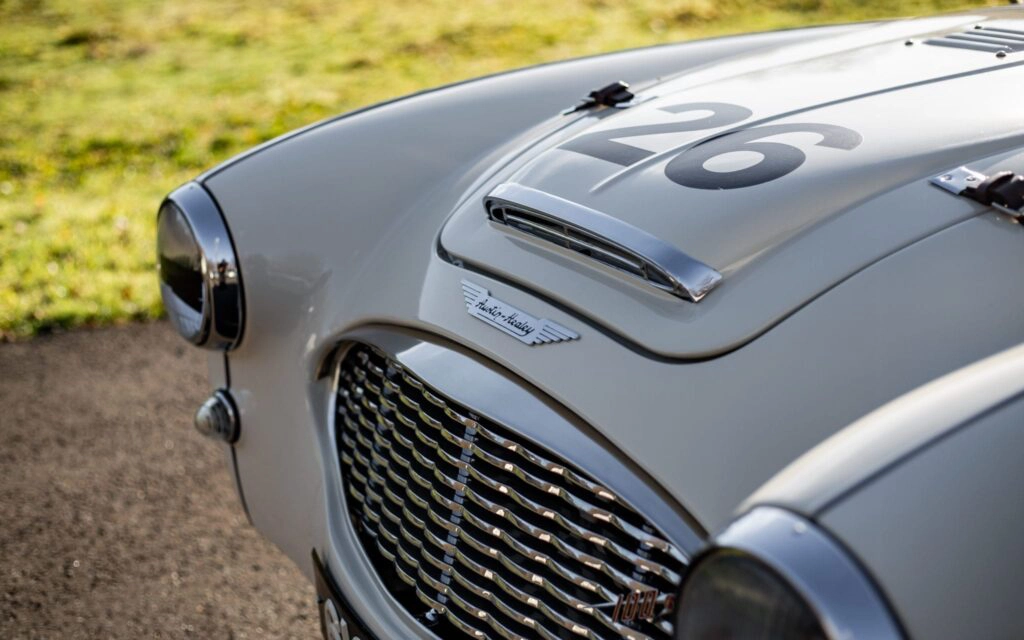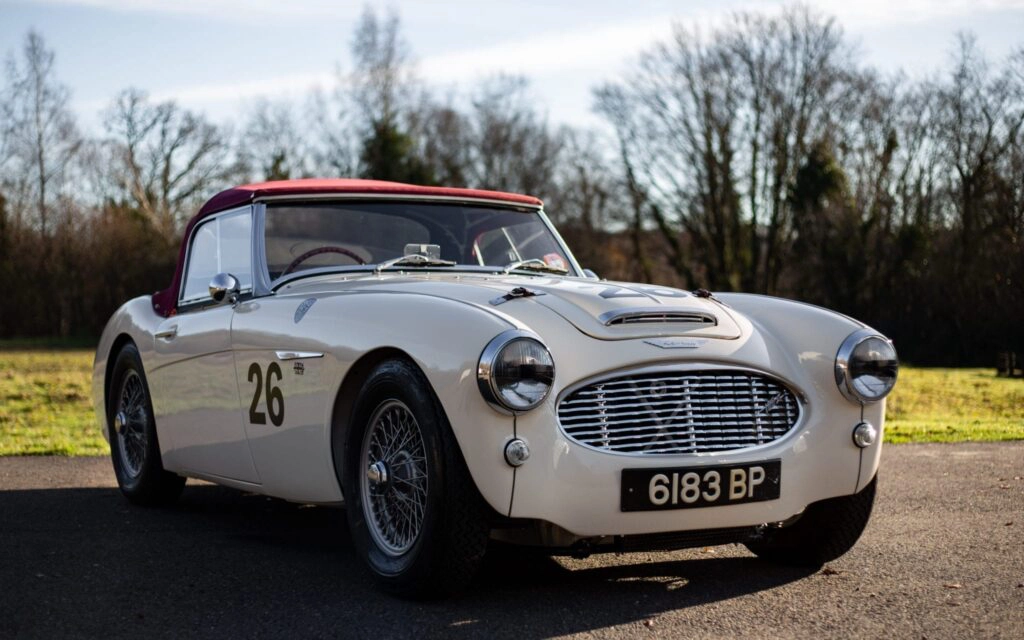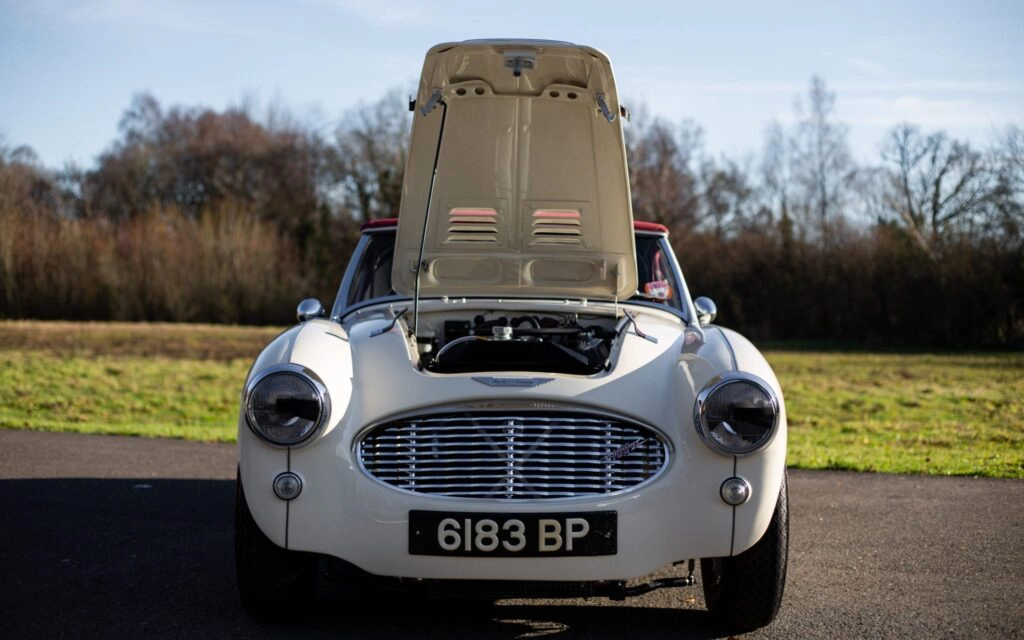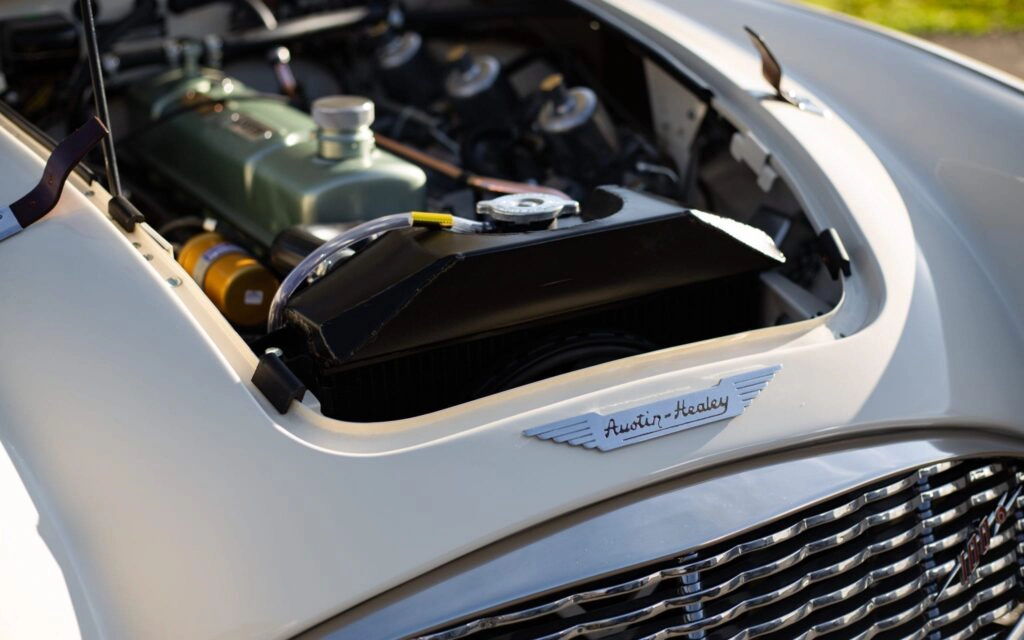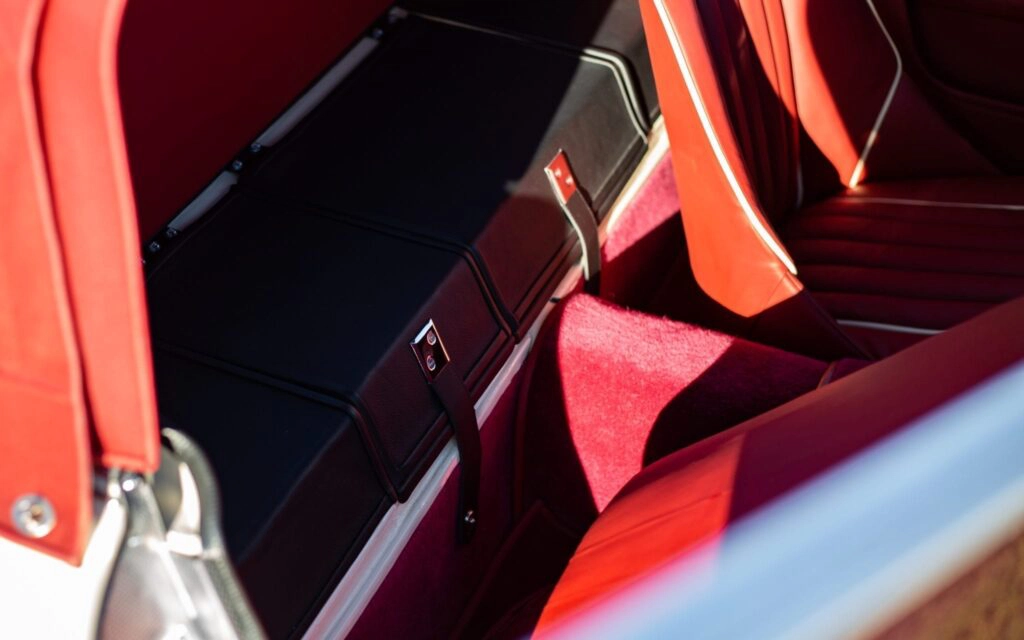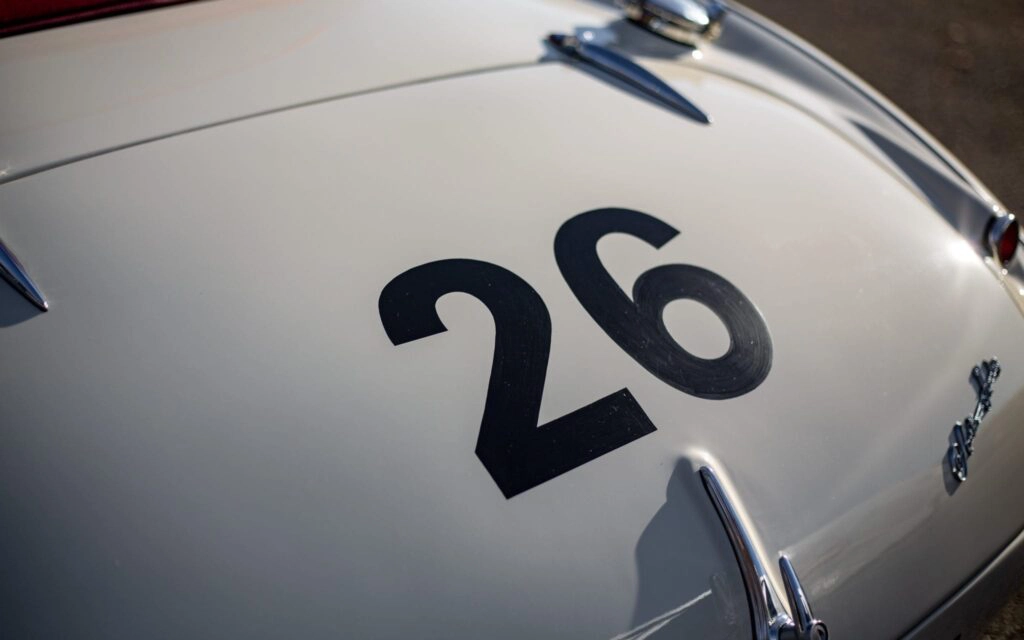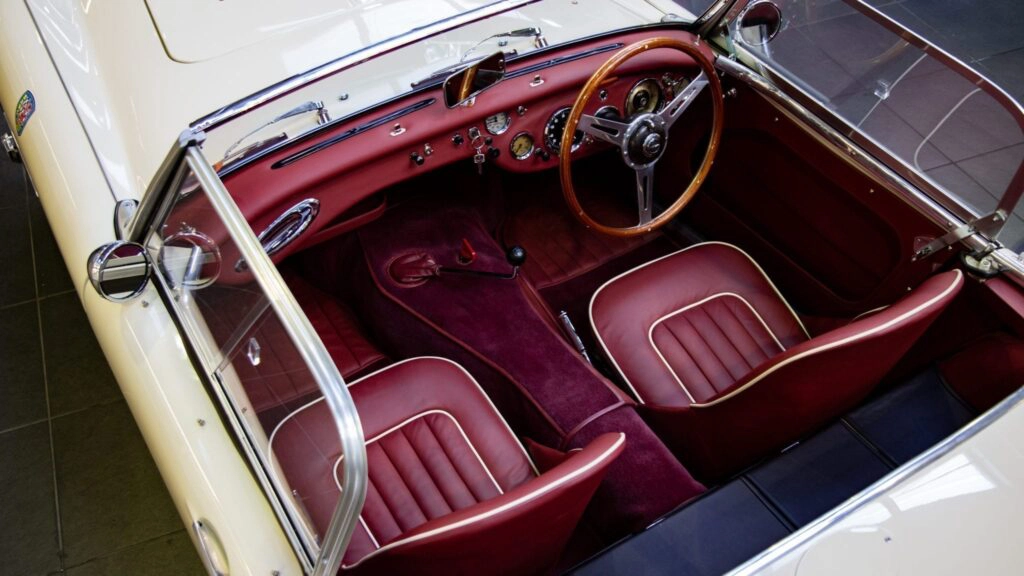A very special Austin-Healey

Redakcja Cabrio Magazyn
November 19, 2019r.
Similar from this category
13 November, 2023
01 November, 2023
30 October, 2023
AUDI TT FINAL EDITION or the end of a design icon
13 November, 2023
DS MANAGER. HAPPINESS AND POSITIVE VIBES WITH PARTNERS
01 November, 2023
CONVERTIBLE VIKINGER! Scandinavia is not only the Fjords
30 October, 2023
Text: Piotr R Frankowski
Photos: Alexander Brodie, Piotr R. Frankowski
In the 1950s. Last century’s entry into the world of auto racing was fairly simple – in Western Europe, of course, because in Eastern Europe former Auto-Union engineers tried to make Stalin’s son into a racing driver. It was. One would buy a serial sports car and hand it over to a specialist, who would install some sports parts, a different camshaft, a different exhaust, different carburetors – all to make the car go faster. In those days, a talented amateur could still fight with factory teams – imagine something similar today, in Formula One.
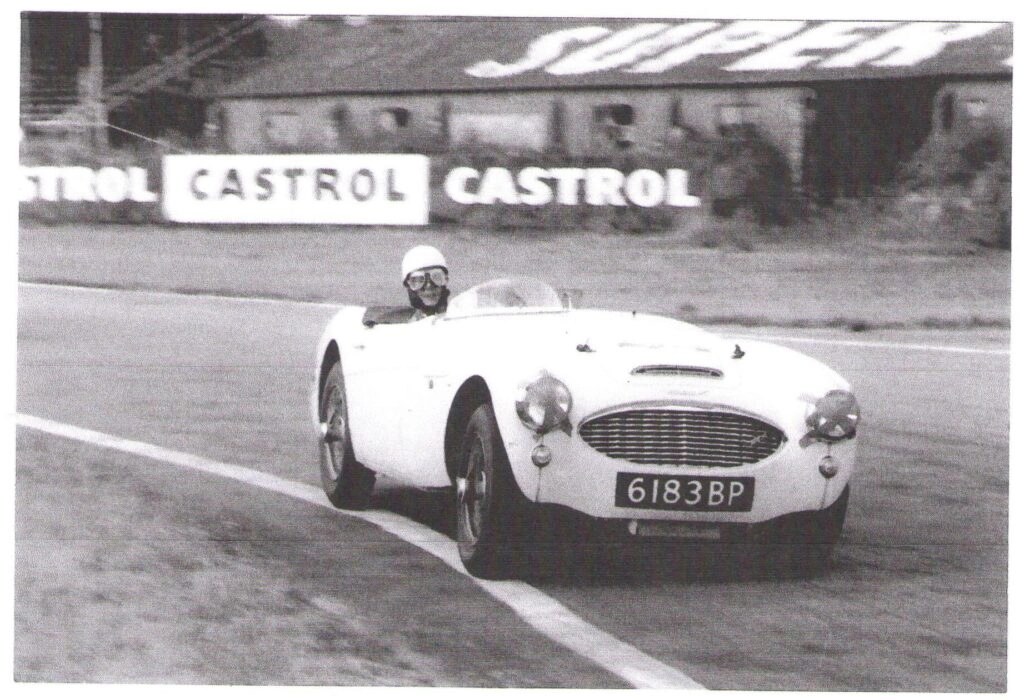
The first owner of the slender Austin-Healey 100/6, purchased in November 1958, a gentleman named C.W. Andrews, freshly received the white car with red upholstery immediately sent it to the renowned Ruddspeed garage. At the time, the company was famous for successfully preparing serial British sports cars for performance. The car, with registration number 6183 BP, was powered by a 2.6-liter inline 6-cylinder engine derived from the C-series unit originally used to power the Austin Westminster. This engine, which Mr. Andrews probably didn’t know, was designed by the same Thaddeus Mark, who later created a new 6-cylinder and later V-8 engine for Aston Martin, which was produced until the end of the 20th century. Mr. Rudd got down hard to work on the Healey and fitted it with, among other things, disc brakes at all four wheels, a side exhaust, three SU carburetors (after allowing the engine to reach 170 hp), suspension components were also strengthened and a thicker stabilizer bar was installed.
The first owner operated the car hard, also racing on the legendary circuit at Goodwood. He must have been a competent driver, because in addition to Healey he competed with other cars, very different from him. Among them were AC Ace-Bristol, Healey 3000, Cooper Climax and Lotus 18. After many years, the car was painstakingly restored and again competed at the same Goodwood Racing Circuit. Again, it’s been a while and its current owner has decided that the car is to be restored to a road-going version – albeit with a powerful powertrain and other unseen attributes. He entrusted the work to CKL Developments in the village of Battle in East Sussex County (it was there that William the Conqueror’s troops defeated English forces in 1066). CKL is known for its work on vintage Jaguars, but can also restore other historic cars with understanding. The result is stunning, and as the only journalist in the world I had the opportunity to taste the Healey ride before it was returned to its owner.
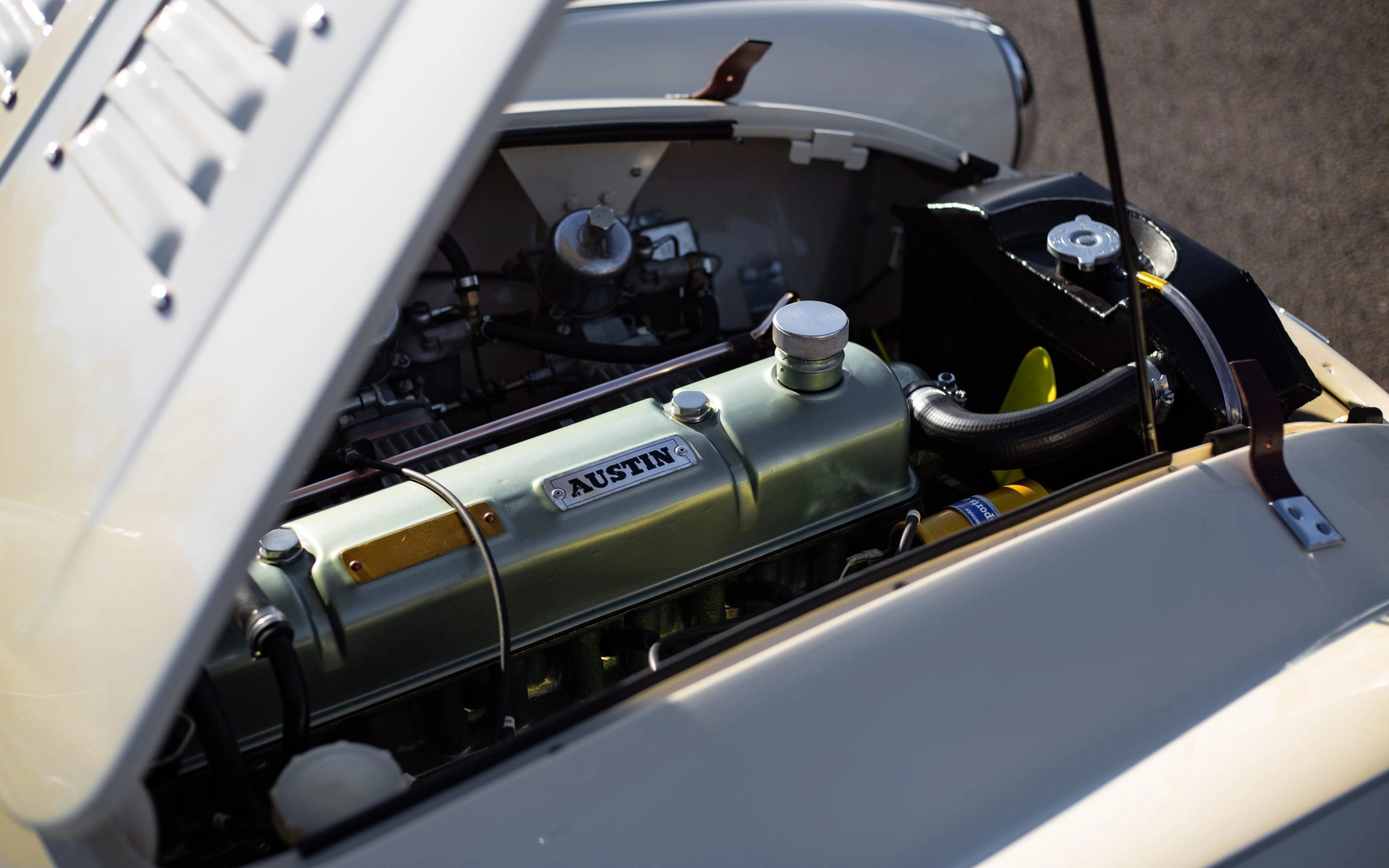

The car looks brilliant, until it is a pity to expose it to the dust of public roads, but, well, I forget about the value of the car and try not to think about the fact that a stone may fly out from under the wheel of another car, which will damage the perfect finish of the body. Anyway, the excellence of detail is not limited to the body, the best evidence of the mechanics’ craftsmanship is the components hidden under the instrument panel. Enough talk, it’s time to go. The engine surprises and begins to work with a furious rumble.
After a while it calms down, but the idle is still a performance car, not a quiet shopping car: the revs are uneven, the impression is as if the animal is jerking nervously in a cage. I move off without a shadow of grace, inelegantly, it must look like the first driving lesson of an exceptionally dull student. But… the engine is heavily stroked, with a narrow range of useful speeds, and the clutch is more difficult to operate than a ballistic missile launcher. Moving off came out clumsily, but once the car is going, I quickly gain confidence and start looking for the limit of the carriage’s capabilities. The engine is a masterpiece, powerful, throaty-sounding, with fantastic torque levels in the mid-range. Pole builder remains in memory. The operation of the transmission perfectly matches the character of the engine, and the Austin-Healey responds instantly to pressing the right pedal. The engine revs so spontaneously that this car would put a couple of today’s fast hatchbacks to shame. Seriously.
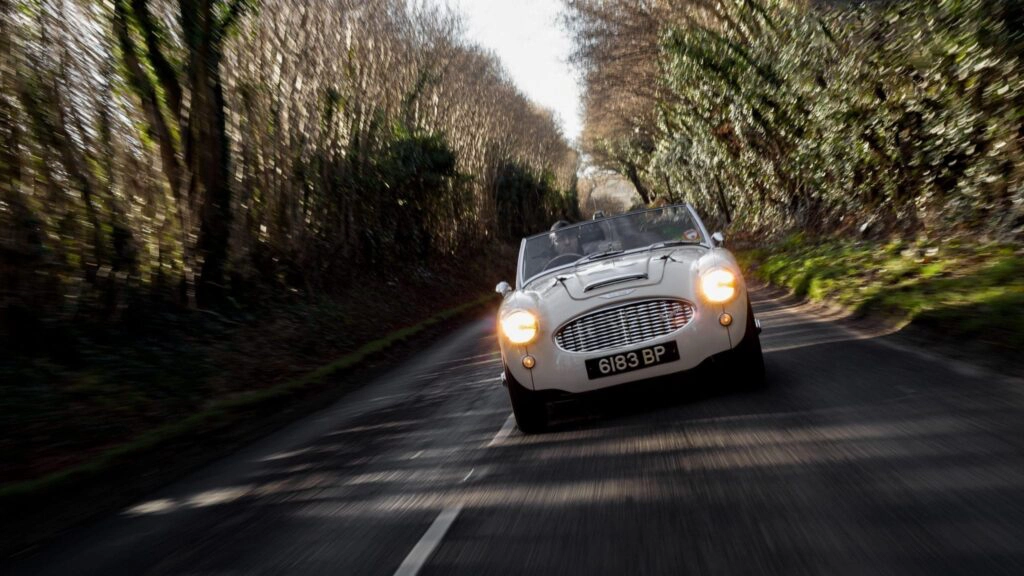
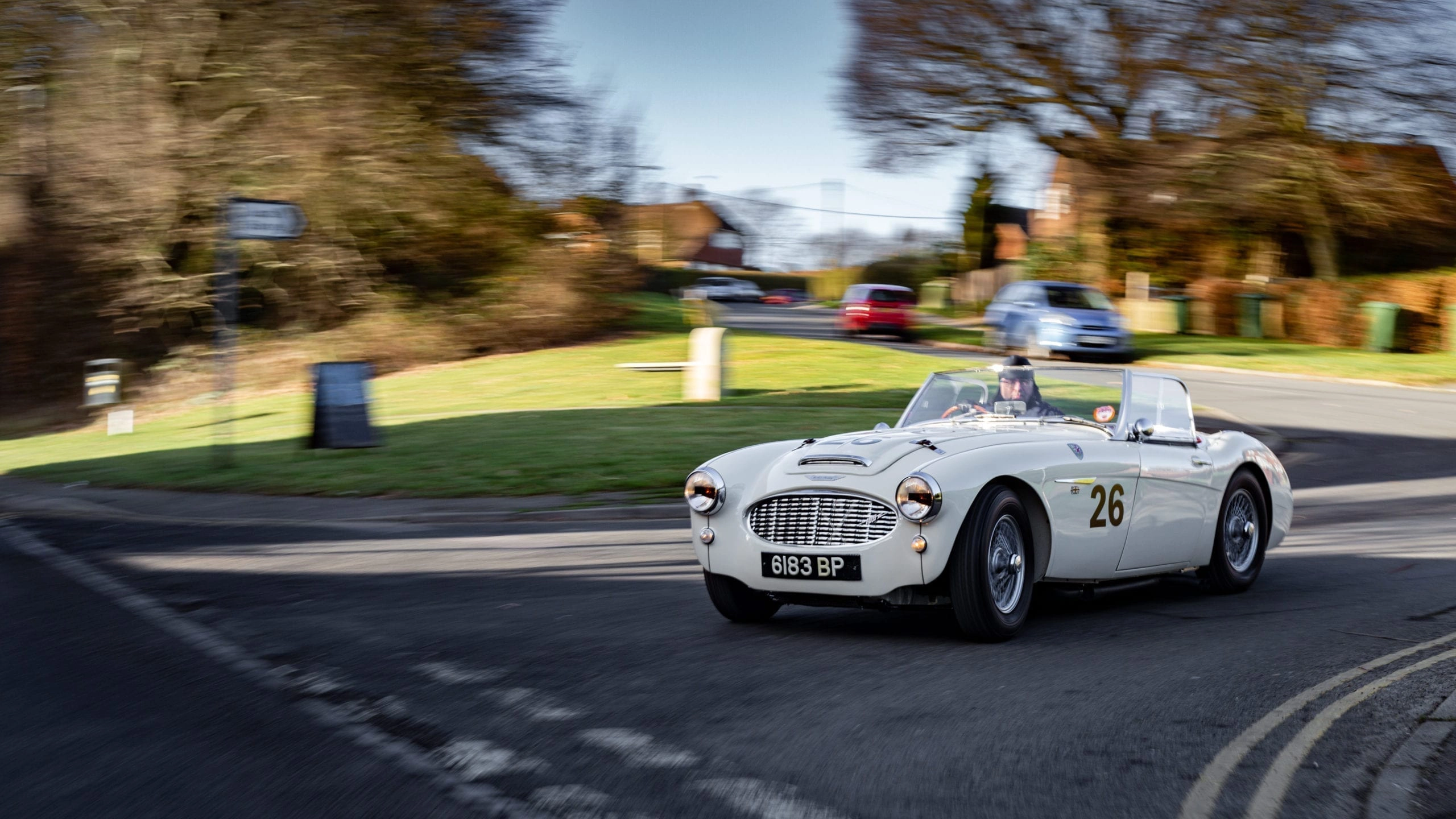
The springy suspension flexes little and does not forgive mistakes: the car follows exactly as the ruts in the asphalt lead it, even the shallow, invisible ones, and responds to steering wheel turns too quickly, too nervously. This is not a car for people with weak nerves who can’t maintain concentration for long periods of time. No Grand Tourer, it’s more like a vehicle with a permanent ADHD attack, capable of hellishly fast driving on winding but level roads. Before the car was handed over to the owner, there were still plans to change the settings to make Healey driving on public roads more civilized. Riding it requires physical strength and determination, but gives satisfaction. It enforces good physical and mental shape of the driver, who should rather be an experienced performance driver. Why did the owner decide to transform a racing tool into a not-quite-perfect road car? And why not?
